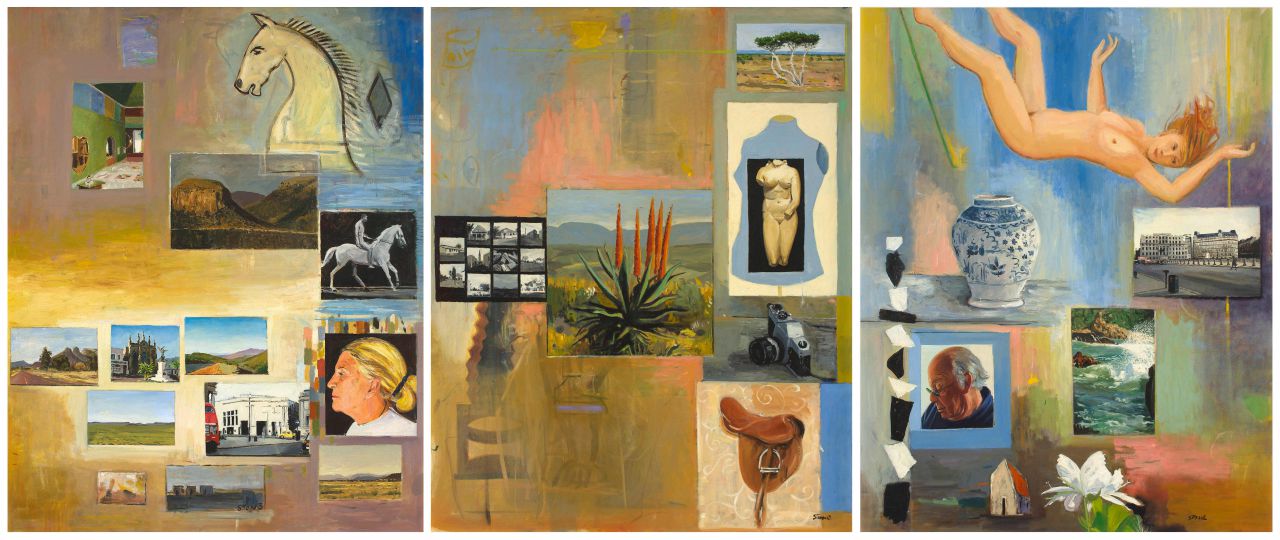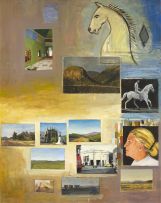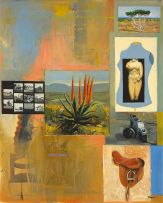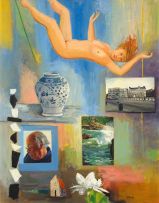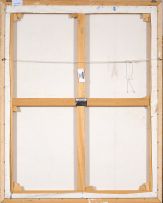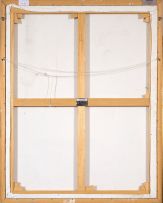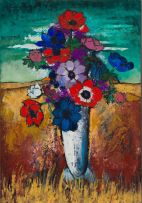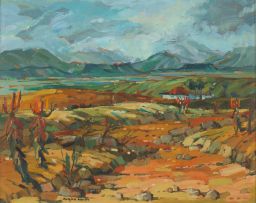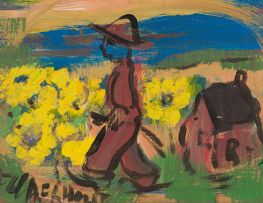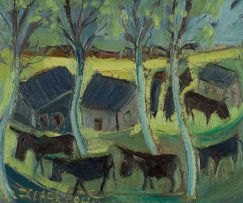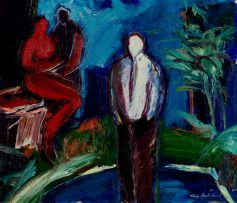19th century, Modern, Post-War, Contemporary Art, Decorative Arts and Wine
Online-Only Auction, 29 June - 6 July 2020
Paintings
Incl. Buyer's Premium & VAT
About this Item
signed; Untitled I and Untitled II inscribed with the artist's name and title on an Ebony Gallery label on the reverse
Notes
"Ever since Simon Stone made his artistic debut in 1977, seemingly random conjunctions of unrelated motifs were the defining characteristic of his art, and so they have remained. Their role was somewhat curtailed during his high Expressionist phase from 1984 to 1988, but thereafter [as is the case with the present series], juxtaposition again became the artist's trademark, and the visual magic one associates with his name, emerges most fully in his visual miscellanies.
Stone's most characteristic works consist of apparently fortuitous combinations of heterogeneous images executed in different idioms, and it is his use of juxtaposition as a compositional method that explains the difficulties his paintings present. Finding the logical thread linking the separate images is difficult. This renders interpretation problematic, and explains why many viewers can claim that Stone's work relies purely on its visual impact, and that it does not necessarily 'say' anything.
The artist claims that he has no imagination, and that he is entirely reliant on the actual and the seen. Apart from purely abstract motifs, whatever one sees in a Stone painting exists in reality, and it was either painted in front of that reality, or whilst consulting a photograph, drawing or some other record of it.
Whenever Stone spots something that excites his visual faculties, he photographs or draws it, and if it occurs in a magazine or newspaper, he cuts it out and adds it to his reference files. This has been his consistent practice over decades … His watercolour sketchbooks often supply motifs for his paintings, and they are supplemented by an enormous image bank of photographs, exhibition catalogues, museum and art gallery guidebooks, art historical studies and monographs. It is from this huge, constantly expanding archive that Stone sources virtually all of his imagery.
Because of his reliance on the real rather than the imagined, the artist's creativity does not emerge in his choice of motifs. Stone's subject matter is rarely original, however, it is his mode of configuring it. […]
Stone says that no blue-print or master plan is there to guide him when he commences a painting."1
"When I first start a work, I may have a sense of the mood I wish to convey, but I have no idea what the final result will be, nor what different visual elements I will introduce into the painting. My point of departure is usually a single visual idea, and once I get it down on canvas, I simply improvise as I go along."
1. Lloyd Pollak (2013) Simon Stone Collected Works, Stellenbosch: SMAC Art Publishing. Pages 124 to 127.
